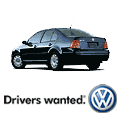WASHINGTON — Federal auto safety regulators on Monday made it official: They are betting the nation’s highways will be safer with more cars driven by machines and not people.þþIn long-awaited guidelines for the booming industry of automated vehicles, the Obama administration promised strong safety oversight, but sent a clear signal to automakers that the door was wide open for driverless cars.þþ“We envision in the future, you can take your hands off the wheel, and your commute becomes restful or productive instead of frustrating and exhausting,” said Jeffrey Zients, director of the National Economic Council, adding that highly automated vehicles “will save time, money and lives.”þþThe statements were the most aggressive signal yet by federal regulators that they see automated car technology as a win for auto safety. Yet having officially endorsed the fast-evolving technology, regulators must now balance the commercial interests of companies including Tesla, Google and Uber with concerns over public safety, especially in light of recent crashes involving semiautonomous cars.þþThe policies unveiled on Monday were designed to walk that line. In a joint appearance, Mr. Zients and Anthony Foxx, secretary of the United States Department of Transportation, released the first guidelines, which outlined safety expectations and encouraged uniform rules for the nascent technology. The instructions signaled to motorists that automated vehicles would not be a Wild West where companies can try anything without oversight, but were also vague enough that automakers and technology companies would not fear overregulation.þþThe new guidelines on Monday, which stopped short of official regulations, targeted four main areas. The Department of Transportation announced a 15-point safety standard for the design and development of autonomous vehicles; called for states to come up with uniform policies applying to driverless cars; clarified how current regulations can be applied to driverless cars; and opened the door for new regulations on the technology.
Source: NY Times


